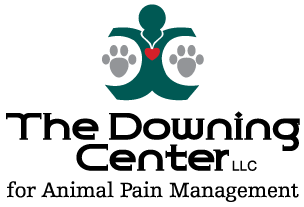Illustrated Articles
-
Regular wellness exams and laboratory testing are designed to detect hidden disease in dogs, allowing for earlier intervention to correct or manage the disease. Typical testing in young or middle-aged dogs include complete blood count, biochemistry panel, urinalysis, and thyroid testing. These tests can be done in conjunction with your dog’s annual visit to your veterinarian.
-
Regular wellness exams and laboratory testing are designed to detect hidden disease in senior dogs, allowing earlier intervention to manage or slow the progress of the disease. Typical testing in senior and geriatric dogs includes complete blood count (CBC) that assesses the red blood cells, white blood cells, and platelets; a biochemistry panel that provides information about the organs, electrolytes, blood sugar, and proteins; urinalysis that assesses kidney function and can identify inflammation or infection in the urinary tract; and a thyroid test to screen for hypothyroidism.
-
Dogs can have misalignment of the teeth much like people. In people, orthodontic care can be used to perfect a pleasing smile or create a functional bite. In dogs, the goal is to make the mouth functional and pain free. Often this involves moving teeth, reducing the height of teeth, or extracting teeth.
-
Dogs were built to chew. That is a fact. Bones can lead to a number of health problems from minor injuries to severe illness. Our job as pet parents, is to provide them with chewing options that do not put them in jeopardy. Happy chewing!
-
Burying of toys or food items by dogs goes back thousands of years as a means of preserving food and storing valuable or scarce food resources. Dogs today do it out of ancestral habit and as a means of resource protection. If you notice that your dog seems to be digging compulsively, contact your veterinarian.
-
Running a veterinary clinic has a lot of overhead and behind the scenes cost that many pet owners aren't aware of. Human healthcare is far more expensive and less efficient than you realize. Plan ahead and take preventive steps to help reduce treating costly problems.
-
Dogs chasing their own tail can be amusing but can also be a sign of a bigger problem. Tail-chasing may be a result of boredom, lack of exercise, exploration (in puppies), or cognitive decline (in older dogs). If your dog suddenly starts chasing or biting at his tail, schedule a veterinary visit, as the cause could be medical.
-
Dogs will always lick, but it is sometimes embarrassing when they lick their private parts. Licking after eliminating is normal; however, if your dog licks more frequently, or you notice other signs such as discharge; swollen or red penis, vulva, or anus; pustules; discoloration of the skin; or if your dog strains to urinate, see your veterinarian for help. Appropriate medical therapy can reduce your dog's discomfort.
-
Dog ancestors turned around before bedtime for their health or protection. These innate habits remain to this day, but if your dog seems to be doing it excessively, it could be a sign of underlying medical problems, such as arthritis or neurological disorders. Contact your veterinarian if your dog appears to have difficulty settling down.
-
Regular preventive health care for your dog can increase the length and quality of her life. Health care guidelines are established and kept up to date using the most recent evidence-based recommendations including the recommendation that all dogs receive a complete veterinary examination at least once a year or more frequently, depending on their individual needs and health concerns.


